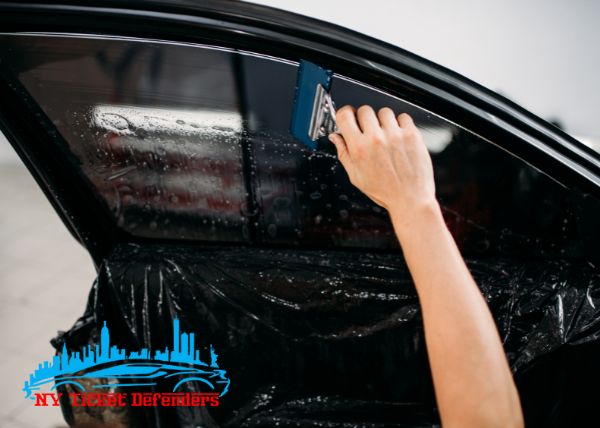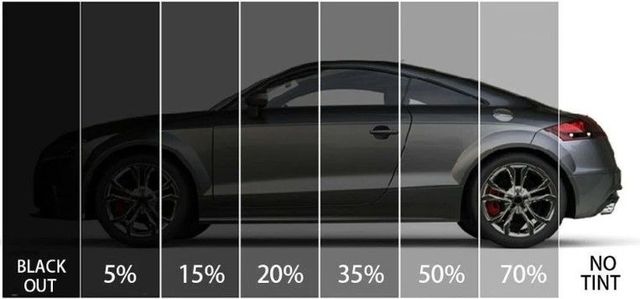Auto Window Tinting: Tips for Keeping an Expert Finish
Auto Window Tinting: Tips for Keeping an Expert Finish
Blog Article
Home Window Tinting Regulations and Standards: What You Need to Know Prior To Tinting Your Auto
Prior to waging home window tinting for your vehicle, it is necessary to acquaint yourself with the diverse legislations and standards that govern this technique across various states. These policies dictate the permissible degrees of color darkness, typically measured by noticeable light transmission (VLT) percents, and consist of specific specifications for front windshields targeted at making certain road security. In addition, certain jurisdictions might use clinical exceptions for individuals with certifying conditions. Recognizing these complexities can save you from prospective lawful implications, but what are the particular rules in your state?
Introduction of Home Window Tinting Rules
Home window tinting legislations are frequently based on variant across various jurisdictions, showing regional laws and safety factors to consider. These laws determine the acceptable degrees of tint darkness and reflectiveness on lorry windows, ensuring that drivers preserve sufficient exposure while also securing against harmful UV rays and heat.
Most policies identify window tinting based upon the Visible Light Transmission (VLT) percentage, which suggests the quantity of light that can travel through the window. Generally, lower VLT percentages symbolize darker tints. Legislations typically distinguish in between the front, side, and rear home windows, with stricter constraints used to the front windscreen to boost security for both the chauffeur and various other roadway users.
Compliance with home window tinting policies is important, as offenses can result in fines, mandatory removal of the color, and potential boosts in insurance coverage premiums. It is important for automobile proprietors to acquaint themselves with local laws prior to continuing with home window tinting installations.
State-by-State Tint Laws
Understanding the certain window tinting policies in each state is important for car owners seeking to follow the regulation. Each state in the united state has developed its very own set of guidelines controling home window tinting, which can vary dramatically. These policies frequently dictate the allowable degrees of tint darkness, the kinds of home windows that can be tinted, and any kind of clinical exceptions that might use.
For instance, states like California have strict limitations on tint darkness for front windows, while others, such as New Mexico, may enable darker colors. In addition, certain states mandate specific exposure portions for various windows, including the windshield, front side windows, and back windows. It is vital for automobile owners to acquaint themselves with their state's laws to prevent potential fines or fines.
Furthermore, some states might call for a qualification sticker label to be positioned on colored windows, suggesting compliance with state regulations. Failing to follow these regulations not just runs the risk of legal effects yet can additionally influence security and presence while driving. Consequently, vehicle proprietors should perform detailed research study or speak with neighborhood authorities to make certain full understanding and compliance with state-by-state color regulations.
Allowed Color Levels and Kinds
Numerous car owners may be amazed to find out that allowed tint degrees and kinds differ extensively throughout different states. Each state has established its very own laws relating to the permitted darkness and reflectivity of window tint, often measured by Visible Light Transmission (VLT) percents. VLT refers to the amount of light that can pass with the colored home windows; therefore, a lower percent shows a darker color.

Additionally, the kinds of color materials enabled can differ, with some states banning metallic or mirror-like coatings. It is crucial for vehicle owners to familiarize themselves with their state's certain regulations to make certain conformity. Non-compliance can cause penalties, obligatory elimination of the tint, or other legal repercussions, making it vital to comprehend these laws prior to waging installment.
Medical Exceptions for Tinting
While not all states provide allocations for medical exceptions pertaining to window tinting, those that do recognize the necessity for specific people to boost visibility and convenience due to clinical conditions. Various clinical problems, such as lupus, skin cancer, and certain eye disorders, can render people specifically sensitive to sunshine. Subsequently, these people might need darker colors to secure look at here themselves from damaging UV rays and glow.

It is essential to note that despite having a medical exemption, there may still be constraints on the level of tint permitted. Compliance with state regulations ensures that individuals are both protected and within lawful restrictions. Those thinking about clinical exemptions ought to call their regional Division of Electric motor Autos or comparable authority to recognize the requirements and procedures necessary to see post make an application for an exemption efficiently.
Fines for Non-Compliance
Failing to comply with home window tinting legislations can result in substantial charges, which differ by state. Police are empowered to provide citations for lorries that do not adhere to the specified tinting regulations. These charges commonly include penalties, which can vary from small total up to several hundred dollars, depending upon the severity of the offense and the state concerned.
In some jurisdictions, find more info duplicated offenses may lead to intensifying fines or added penalties, such as mandatory court appearances. Non-compliance might necessitate the elimination of prohibited tinting, typically at the proprietor's cost. In extreme instances, habitual transgressors might deal with suspension of their automobile registration until compliance is achieved.
Additionally, insurance coverage ramifications may emerge from obtaining numerous citations for home window color violations. Insurance companies might watch such violations as an indicator of riskier actions, possibly leading to raised premiums or trouble in protection.
To stay clear of these charges, it is vital for vehicle proprietors to acquaint themselves with their regional window tinting legislations and make sure that their vehicle complies (Window Tinting). This aggressive approach not just avoids lawful implications but additionally advertises roadway security
Verdict

Most regulations categorize home window tinting based on the Visible Light Transmission (VLT) percent, which shows the amount of light that can pass via the window. Compliance with home window tinting policies is important, as infractions can result in penalties, required removal of the tint, and potential increases in insurance coverage costs.Recognizing the specific home window tinting regulations in each state is essential for automobile proprietors looking for to abide with the regulation. These regulations often dictate the allowed levels of tint darkness, the types of windows that can be tinted, and any medical exemptions that may apply.
For instance, states like The golden state have rigorous constraints on tint darkness for front windows, while others, such as New Mexico, may enable darker colors.
Report this page